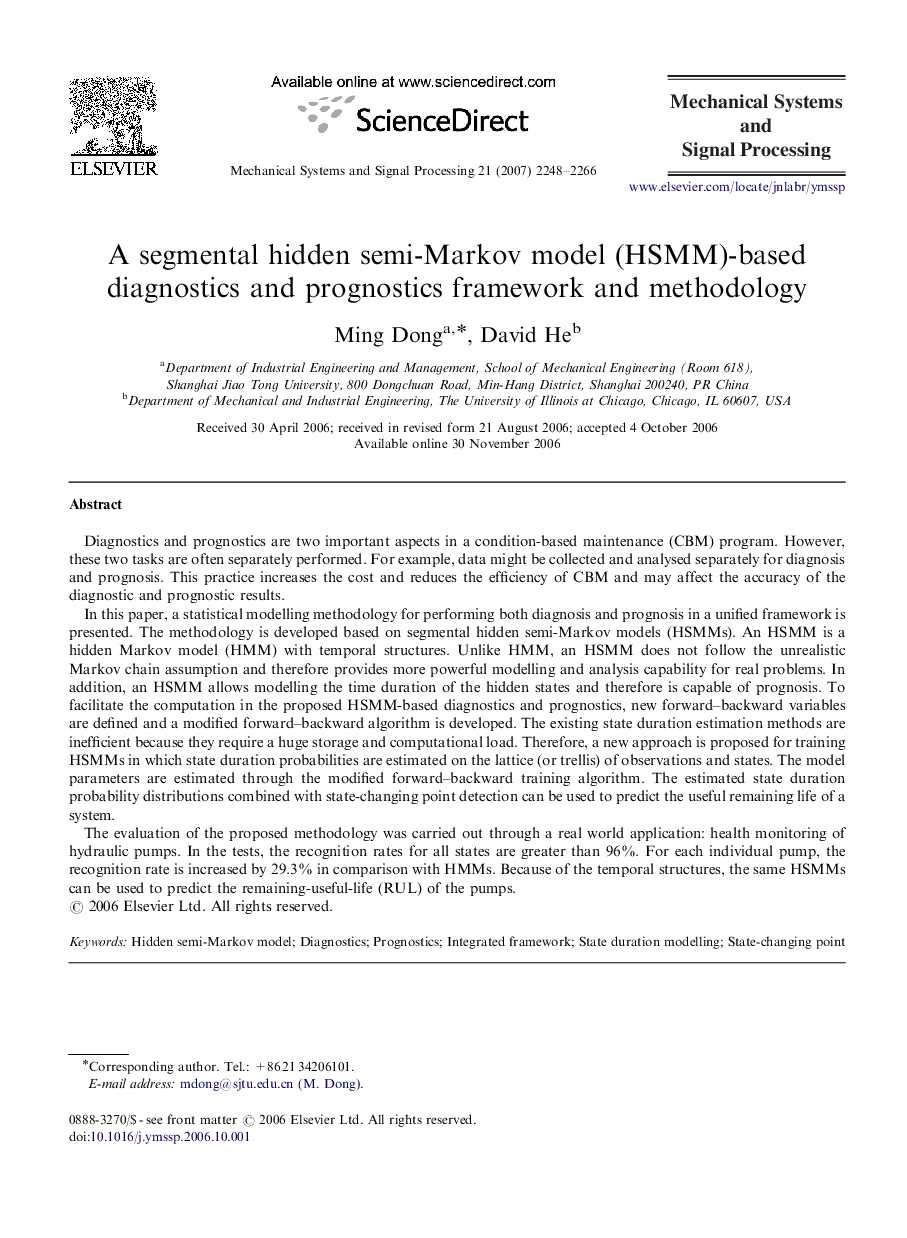| کد مقاله | کد نشریه | سال انتشار | مقاله انگلیسی | نسخه تمام متن |
|---|---|---|---|---|
| 560885 | 875217 | 2007 | 19 صفحه PDF | دانلود رایگان |

Diagnostics and prognostics are two important aspects in a condition-based maintenance (CBM) program. However, these two tasks are often separately performed. For example, data might be collected and analysed separately for diagnosis and prognosis. This practice increases the cost and reduces the efficiency of CBM and may affect the accuracy of the diagnostic and prognostic results.In this paper, a statistical modelling methodology for performing both diagnosis and prognosis in a unified framework is presented. The methodology is developed based on segmental hidden semi-Markov models (HSMMs). An HSMM is a hidden Markov model (HMM) with temporal structures. Unlike HMM, an HSMM does not follow the unrealistic Markov chain assumption and therefore provides more powerful modelling and analysis capability for real problems. In addition, an HSMM allows modelling the time duration of the hidden states and therefore is capable of prognosis. To facilitate the computation in the proposed HSMM-based diagnostics and prognostics, new forward–backward variables are defined and a modified forward–backward algorithm is developed. The existing state duration estimation methods are inefficient because they require a huge storage and computational load. Therefore, a new approach is proposed for training HSMMs in which state duration probabilities are estimated on the lattice (or trellis) of observations and states. The model parameters are estimated through the modified forward–backward training algorithm. The estimated state duration probability distributions combined with state-changing point detection can be used to predict the useful remaining life of a system.The evaluation of the proposed methodology was carried out through a real world application: health monitoring of hydraulic pumps. In the tests, the recognition rates for all states are greater than 96%. For each individual pump, the recognition rate is increased by 29.3% in comparison with HMMs. Because of the temporal structures, the same HSMMs can be used to predict the remaining-useful-life (RUL) of the pumps.
Journal: Mechanical Systems and Signal Processing - Volume 21, Issue 5, July 2007, Pages 2248–2266